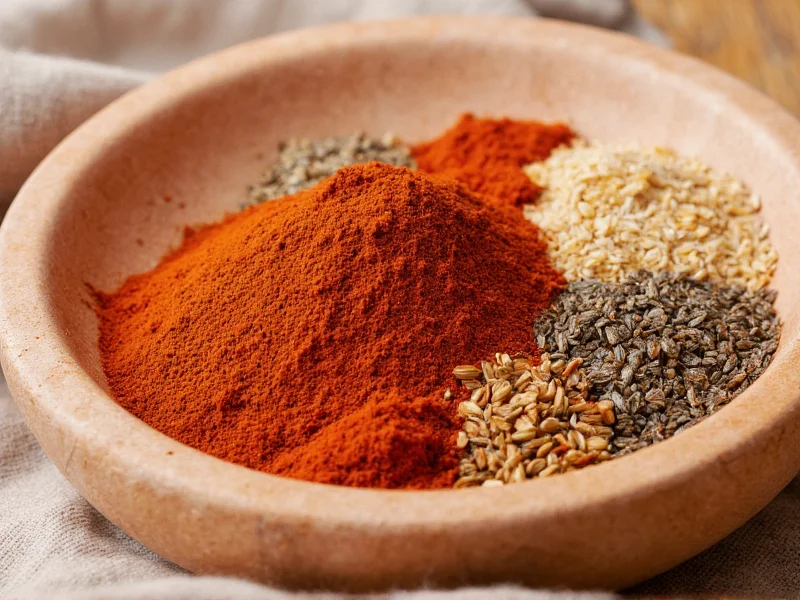The standard dried spice to fresh ratio is 1:3—meaning 1 teaspoon of dried spice equals 3 teaspoons (1 tablespoon) of fresh herbs. This conversion accounts for the water content removed during drying, which concentrates the flavor compounds. However, this ratio varies by herb and spice, with some requiring adjustments based on potency and culinary application.
Understanding dried spice to fresh ratios transforms your cooking precision. When recipes call for one form but you only have the other, knowing these conversions prevents bland or overpowering dishes. The 1:3 rule serves as a reliable starting point, but experienced cooks recognize that exceptions exist based on the specific herb's characteristics and how it's used in your dish.
Why Dried and Fresh Spices Aren't Interchangeable
Drying removes 80-90% of moisture from herbs, concentrating their essential oils and flavor compounds. This concentration explains why dried spices pack more punch per volume than their fresh counterparts. However, the drying process also alters flavor profiles—some notes intensify while others diminish. For instance, dried oregano develops earthier notes compared to fresh's brighter citrus undertones.
Storage conditions significantly impact dried spice potency. Properly stored in airtight containers away from light and heat, dried spices maintain peak flavor for 6-12 months. After this period, you may need to increase quantities slightly to achieve the same flavor intensity, adjusting your dried spice to fresh ratio accordingly.
Comprehensive Dried to Fresh Spice Conversion Guide
While the 1:3 ratio works for many herbs, specific spices require nuanced approaches. The following reference table provides precise conversions for common culinary herbs and spices:
| Herb/Spice | Dried Measurement | Fresh Measurement | Special Notes |
|---|---|---|---|
| Basil | 1 tsp | 1 tbsp | Fresh basil loses flavor quickly when cooked |
| Oregano | 1 tsp | 1.5 tbsp | Dried oregano is more potent than fresh |
| Thyme | 1 tsp | 1 tbsp | Fresh thyme stems add flavor during cooking |
| Rosemary | 3/4 tsp | 1 tbsp | Dried rosemary is significantly stronger |
| Parsley | 1.5 tsp | 1 tbsp | Fresh parsley better for garnish |
| Cilantro | 1.5 tsp | 1 tbsp | Flavor profiles differ significantly |
| Garlic | 1/4 tsp powder | 1 clove | Fresh garlic has brighter flavor |
| Ginger | 1/4 tsp powder | 1 tsp grated | Fresh ginger has more complex flavor |
Factors That Affect Dried Spice to Fresh Ratio Accuracy
Several variables influence how precisely you should follow standard dried herb to fresh conversion guidelines:
Herb Type and Composition
Leafy herbs like basil and parsley follow the 1:3 ratio more closely than woody herbs like rosemary and thyme, which often require less dried product due to higher concentration of essential oils. Understanding these dried spice measurement conversion nuances prevents overpowering your dishes.
Cooking Method and Timing
Add dried spices early in cooking to allow time for rehydration and flavor development, while fresh herbs typically go in during the last 5-10 minutes to preserve volatile oils. When converting fresh herbs to dried in recipes with long cooking times, you may need to increase the dried quantity slightly beyond standard ratios.
Personal Taste Preferences
Your individual palate matters when applying dried to fresh herb substitution guidelines. Some people prefer more pronounced herbal notes, while others want subtler background flavors. Always start with the recommended ratio, then adjust to taste during cooking—this approach works whether you're converting dried oregano to fresh or adjusting any other herb ratio.
Advanced Techniques for Perfect Spice Substitution
Professional chefs employ several strategies when working with dried spice to fresh ratios that home cooks can easily adopt:
The Taste-As-You-Go Method
When substituting, add about 75% of the recommended amount initially, then adjust after 10-15 minutes of cooking. This technique accounts for how flavors develop and concentrate during preparation, especially important when converting fresh herbs to dried in recipes with extended cooking times.
Rehydrating Dried Herbs
For dishes with minimal liquid, briefly soak dried herbs in warm water or broth (1:2 ratio by volume) for 10-15 minutes before adding. This rehydration process mimics fresh herb texture and distributes flavor more evenly, effectively creating a customized dried herb to fresh conversion for that specific recipe.
Blending Forms for Complex Flavor
Many professional recipes combine both forms—using dried spices for foundational flavor and fresh herbs for finishing. For example, a tomato sauce might use dried oregano during simmering (1 tsp) with fresh basil added at the end (2 tbsp), creating layered flavor that neither form alone could achieve.
Common Mistakes to Avoid with Spice Conversions
Even experienced cooks sometimes misjudge dried to fresh herb ratios. Watch for these frequent errors:
- Overcompensating for dried spices - Using equal amounts instead of adjusting for concentration
- Ignoring freshness factors - Not accounting for how long dried spices have been stored
- Misjudging cooking time impact - Adding fresh herbs too early or dried herbs too late
- Treating all herbs equally - Applying the same ratio to delicate parsley as robust rosemary
Remember that dried spice measurement conversion isn't purely mathematical—it's a culinary skill developed through practice. The ratios provide a starting point, but your palate should ultimately guide final adjustments. This understanding of dried vs fresh spice ratio nuances separates adequate cooks from exceptional ones.
Practical Application: Converting Your Favorite Recipes
When adapting recipes using dried spice to fresh ratios, follow this systematic approach:
- Identify all herbs and spices in the original recipe
- Consult the conversion chart for each specific herb
- Adjust quantities based on cooking method and duration
- Prepare a small test batch before making a full recipe
- Document your adjustments for future reference
This method works whether you're converting fresh herbs to dried in recipes for winter stews or adapting summer recipes to use dried pantry staples. Professional chefs maintain conversion notebooks tracking their successful adjustments across different recipes and seasons.











 浙公网安备
33010002000092号
浙公网安备
33010002000092号 浙B2-20120091-4
浙B2-20120091-4